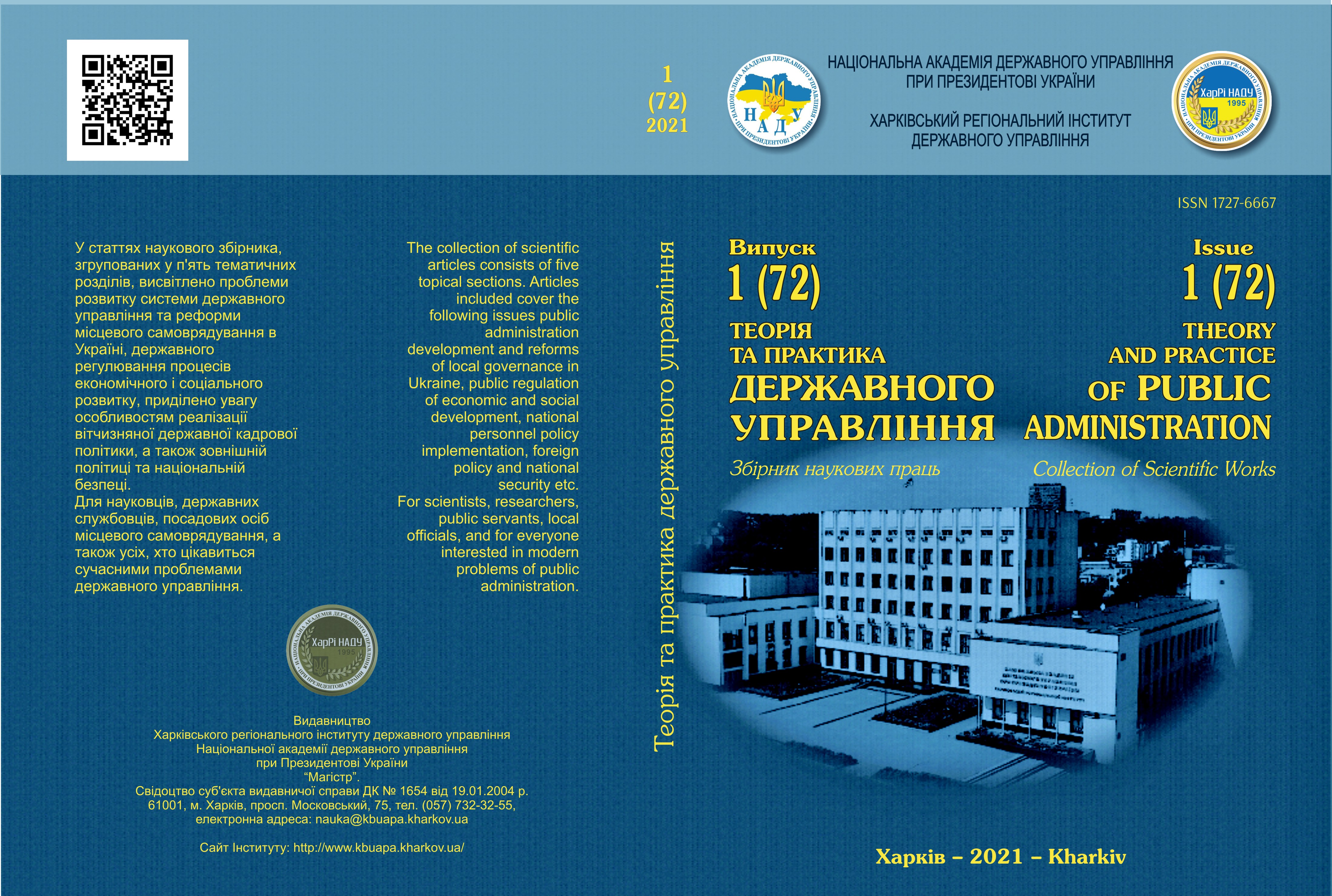HISTORICAL ASPECTS OF THE DEVELOPMENT OF METHODS OF TEACHING A FOREIGN LANGUAGE IN THE TRAINING OF CIVIL SERVANTS
Abstract
The article considers modern methods of teaching a foreign language to students of the course “Public Administration and Local Self-Government” using a variety of approaches and techniques of blended learning. The necessity and relevance of this method in the comparative analysis of classical approaches in teaching a foreign (English) language is emphasized. The advantages and some disadvantages of the interactive method with further improvement of the educational process are analyzed.
In the conditions of Ukraine’s competitive entry into the international educational arena, it is becoming increasingly difficult to ensure a high level of education for students of higher educational institutions, using only traditional teaching methods. Involvement of new effective methods of teaching a foreign language for the training of civil servants, in particular, has become not only desirable but also necessary. Among the advanced methods in the modern educational process of learning English, much attention is paid to interactive methods based on a person-centered approach to the student, aimed at developing not only the creative potential of the student, but also the ability to think and react quickly, improving communication skills.
The social, cultural, political and economic changes that have taken place in the country in recent years are placing new demands on professionals in various fields of knowledge, and civil servants and local government officials are no exception. Learning English plays an important role in shaping the professional qualities of future and current statesmen. The implementation of tasks requires the use of different methods of teaching English in the learning process and in non-professional universities, the main methodological innovations today include the use of interactive methods. Interactive teaching methods are the actual way a teacher works with in a class, group or any educational institution.
Downloads
References
Gattegno, C. (1972). Teaching Foreign Languages in Schools: The Silent Way. New York: Educational Solutions.
Krashen, S.D. (1987). Principles and Practice in Second Language Acquisition. New York; London: Prentice Hall International.
Richards, J.C., Rodgers, T.S. (2001). Approaches and Methods in Language Teaching. Cambridge UK: Cambridge University Press.
Terrel, T.D. (1982). The natural approach to language teaching: an update. Modern Language Journal, 66, 121–132.
Authors who publish with this journal agree to the following terms:
- Authors retain copyright and grant the journal right of first publication with the work simultaneously licensed under a Creative Commons Attribution License that allows others to share the work with an acknowledgement of the work's authorship and initial publication in this journal.
- Authors are able to enter into separate, additional contractual arrangements for the non-exclusive distribution of the journal's published version of the work (e.g., post it to an institutional repository or publish it in a book), with an acknowledgement of its initial publication in this journal.
- Authors are permitted and encouraged to post their work online (e.g., in institutional repositories or on their website) prior to and during the submission process, as it can lead to productive exchanges, as well as earlier and greater citation of published work (See The Effect of Open Access).

